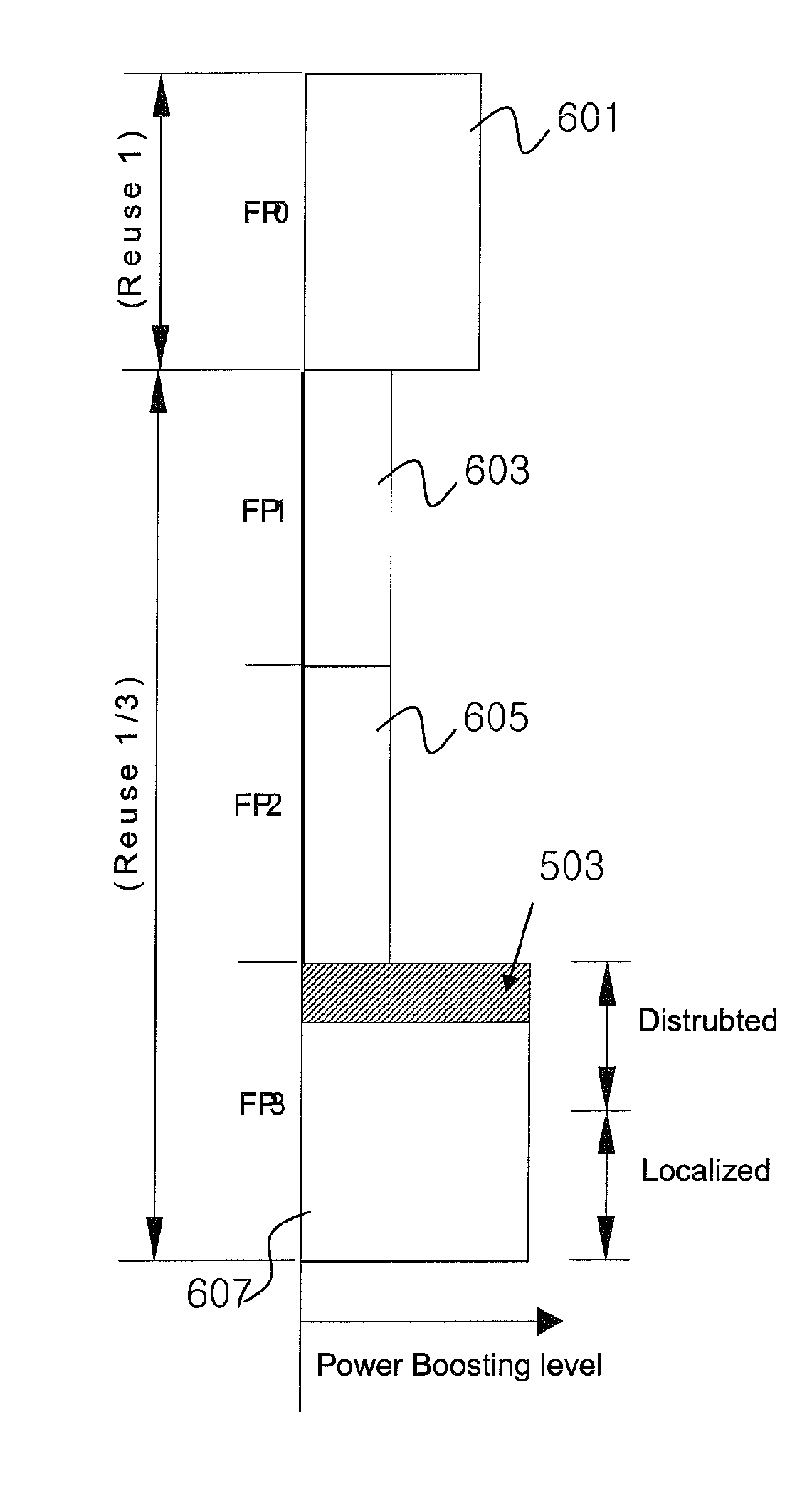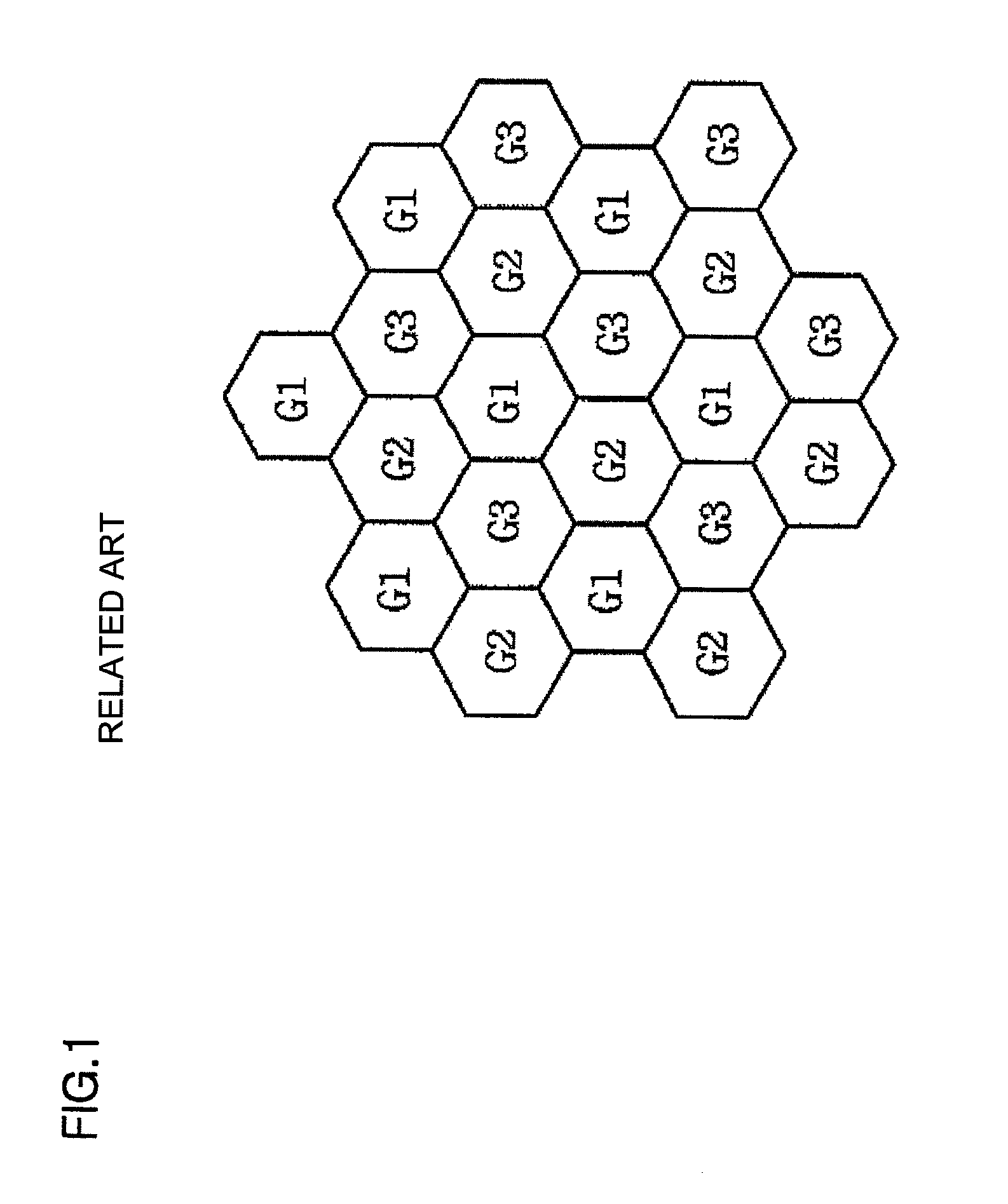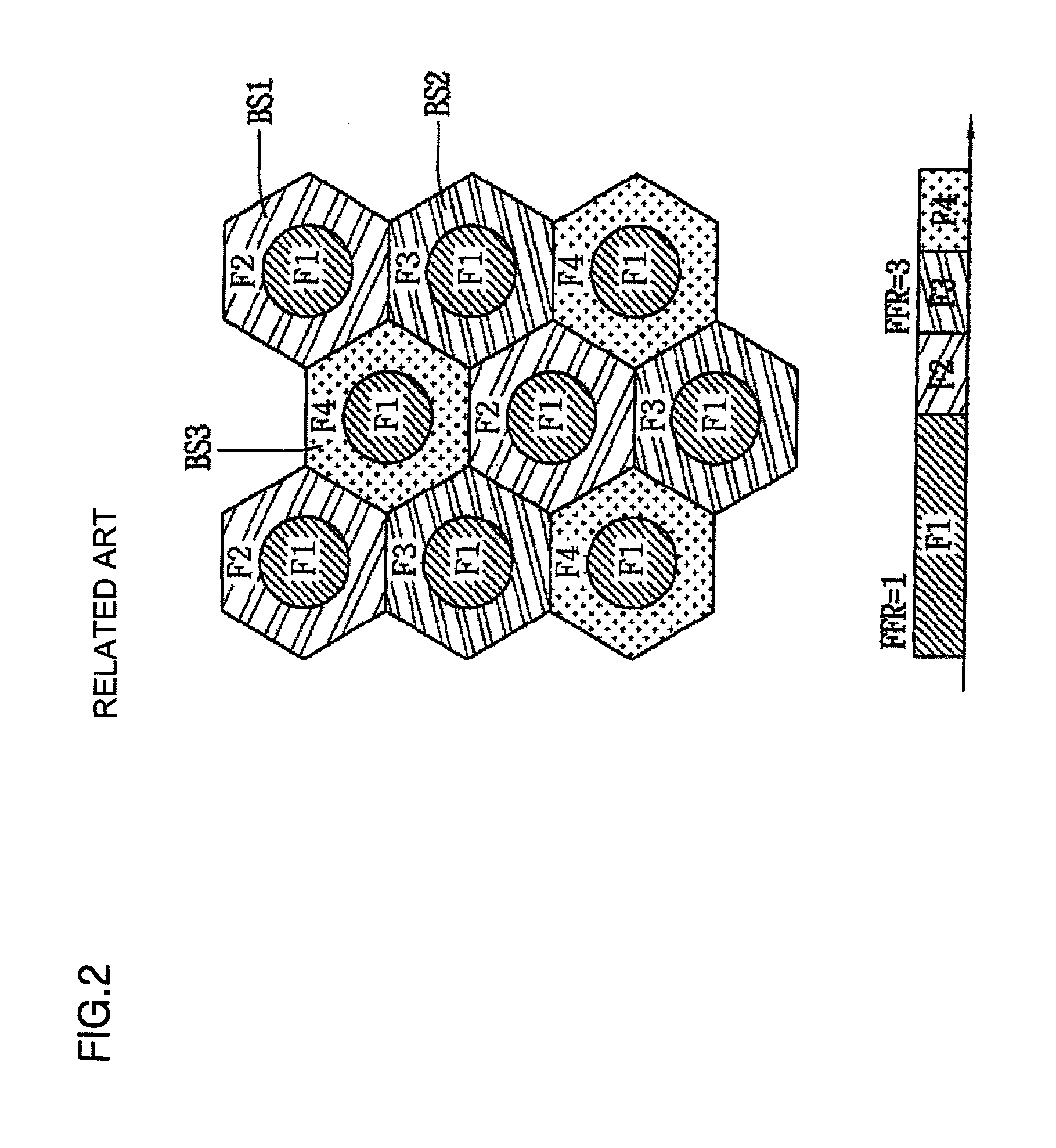Apparatus and method for allocating downlink control channel
a control channel and control channel technology, applied in the direction of error prevention, digital transmission, wireless communication, etc., can solve the problems of accelerating the exhaustion of available frequency resources in a frequency band lower than 3 ghz, affecting the efficiency of resource utilization, and interference between neighboring cells or sectors in the boundary of a cell or sector, etc., to achieve the flexibility of transmission of a-map, increase the efficiency of resource utilization, and increase the decoding performance of the terminal located
- Summary
- Abstract
- Description
- Claims
- Application Information
AI Technical Summary
Benefits of technology
Problems solved by technology
Method used
Image
Examples
Embodiment Construction
[0035]Exemplary embodiments of the present invention will now be described in detail with reference to the accompanying drawings. The same reference numerals will be used throughout to designate the same or like components and a repeated description will be omitted. In describing the present invention, if a detailed explanation for a related known function or construction is considered to unnecessarily divert the gist of the present invention, such explanation will be omitted but would be understood by those skilled in the art. In the drawings, the shapes and dimensions may be exaggerated for clarity, and the same reference numerals will be used throughout to designate the same or like components. The accompanying drawings, which are given by illustration only, and thus are not imitative of the present invention.
[0036]The terminal according to an exemplary embodiment of the present invention may also be referred to as subscriber station (SS), user equipment (UE), mobile equipment (M...
PUM
 Login to View More
Login to View More Abstract
Description
Claims
Application Information
 Login to View More
Login to View More - R&D
- Intellectual Property
- Life Sciences
- Materials
- Tech Scout
- Unparalleled Data Quality
- Higher Quality Content
- 60% Fewer Hallucinations
Browse by: Latest US Patents, China's latest patents, Technical Efficacy Thesaurus, Application Domain, Technology Topic, Popular Technical Reports.
© 2025 PatSnap. All rights reserved.Legal|Privacy policy|Modern Slavery Act Transparency Statement|Sitemap|About US| Contact US: help@patsnap.com



